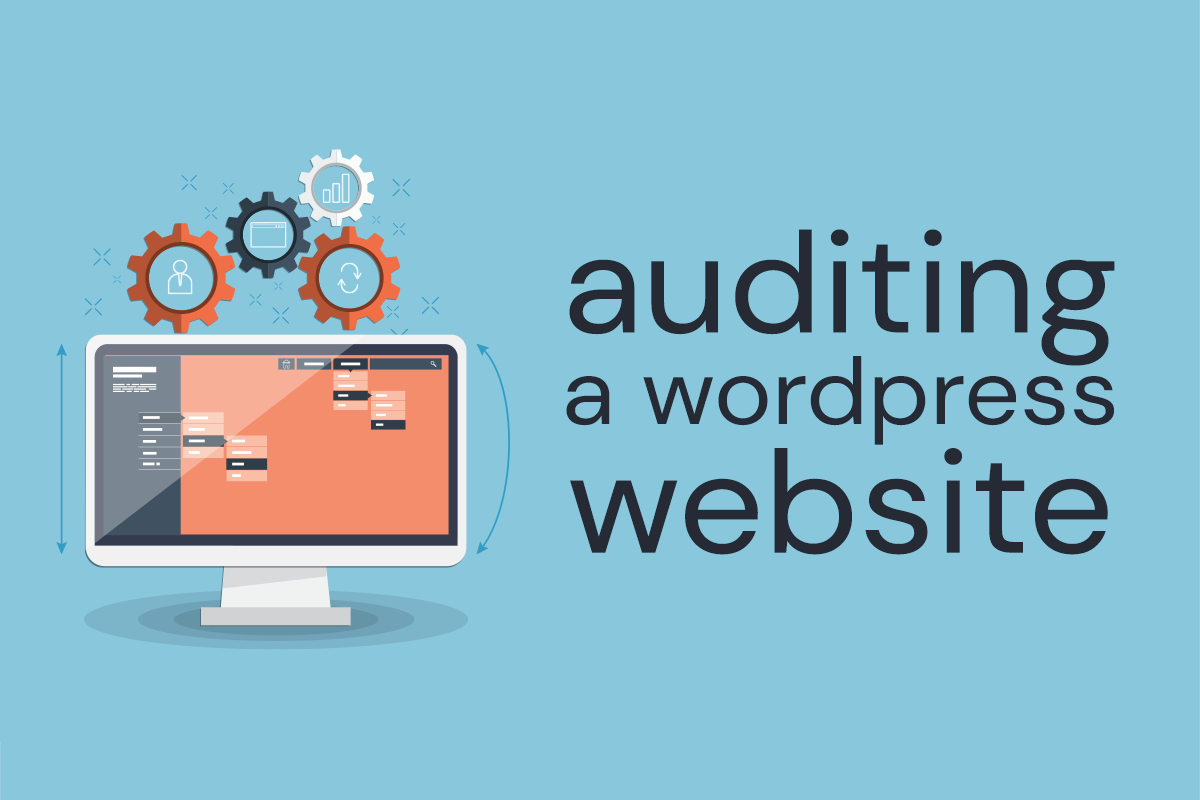When we take over an existing website, we have a long—and we mean long—checklist of things we look for. We check But if we had to boil that list down to the top ten items we look at when evaluating a WordPress website, here they are!
-
- Does it have Google Analytics installed? Google Analytics is essential to determine where your traffic is coming from, what pages your users visit most, how long they stay there, and much more. To find out if a website has Google Analytics, go to any page and “View Source.” Search the code for the string “UA-.” If it has a UA number, then Google Analytics should be installed (but of course you will still need the login info for the Google Analytics account to view those stats). You can also use a service like this to find out if Google Analytics is installed: http://www.gachecker.com/
-
- What is the original WordPress theme? If we have admin access to the back end, we just look at the theme that’s installed, obviously. If not, it’s easy to go to a website like http://whatwpthemeisthat.com/ and figure out where it came from. As long as it’s not custom built from scratch, you can often find out lots of helpful information about that theme and its possibilities. If you can view the demo version of the theme on Themeforest (one popular theme reseller), you might find that the theme comes with a nice option for a bar on top with social networking icons, or a robust slider for the homepage, or a rotating testimonials widget that you might not have known about otherwise.
-
- Is the most important content above the fold? The term “above the fold” hearkens back to newspaper publishing days. Since newspapers are typically displayed folded in half, only the top half is displayed to customers walking by a newsstand or dispenser. Similarly, on a website, the part of the website that is visible before you have to physically scroll down is the most critical part of the site, and the most likely to be seen. It must be used wisely.
-
- On the front end, do you see a section in the sidebar labeled META that allows you to log in as an admin? There is no legitimate reason that should be there. Look for the META widget in the back end and remove that; it makes the site look slapdash and amateurish.
-
- How are those URLs shaping up? Are the URLs helpful identifiers of the content, like http://www.yourfantasticsite.com/about-us ? Or do you have ugly links like this? http://example.com/?p=N. Or do you have links that need to be fixed, like this? http://www.yourfantasticsite.com/about-us-3 (the 3 indicates that you had 2 other “About Us” pages in the past, and you need to trash and delete them—or rewrite their URLs—before the about-us is freed up for use as a URL again).
-
- Is the blog section of this website being updated regularly, if there is one? If it hasn’t been updated in ages, you might want to consider hiding the post dates. Or better yet—update that blog!
-
- Is there a way for users to contact you on your website? Ideally, you should make it as easy as possible for your visitors to get in touch, whether by a phone number that’s published in your header, footer, and/or sidebars, or a contact form that’s peppered throughout the website. If there is a contact form, does it have a CAPTCHA, and is it overly difficult to use? Be sure to test the form to make sure it’s working properly. Contact form plugins are routinely exploited by hackers, so it’s important to make sure they are kept up to date.
-
- Are there broken links? When signing up for Google Analytics, it’s worth activating Google Webmaster Tools as well, which will help you identify broken links, also known as 404s. For larger websites, we like to use a WordPress plugin like Broken Link Checker to audit and fix broken links. This plugin will scan your database regularly and email you if it finds a broken link. Nice!
-
- Do you see any broken images? Take note of all of them; those should be fixed. Yuck!
- Is the copyright date in the footer current? It’s probably not helpful to SEO (we wish it were that simple), but it does show the human visitors to your site that you care about updating it.
Some of the other critical things we look at that are beyond the scope of this blog post are hosting package and provider (is it adequate for the needs of the website?), backups (are backups being scheduled?), and security. Security is a huge can of worms itself. Is the site running the most recent version of WordPress? Are the plugins up to date? Are there any security measures to prevent a bad actor from taking over the site, like a login limiter? If you need help with any or all of the items on this list, contact us or leave us a comment below!






